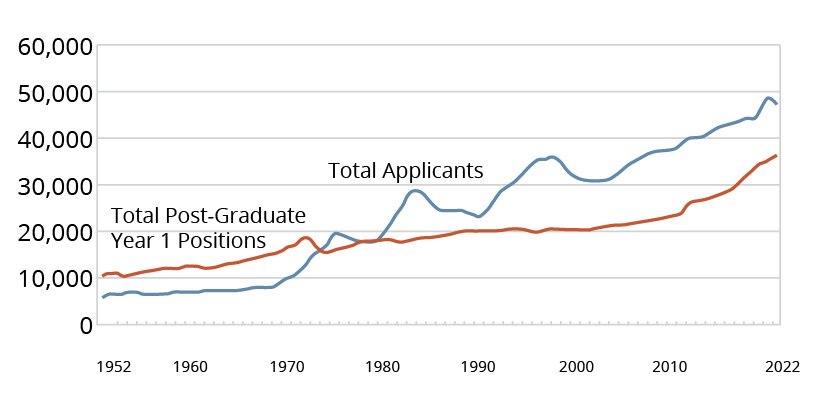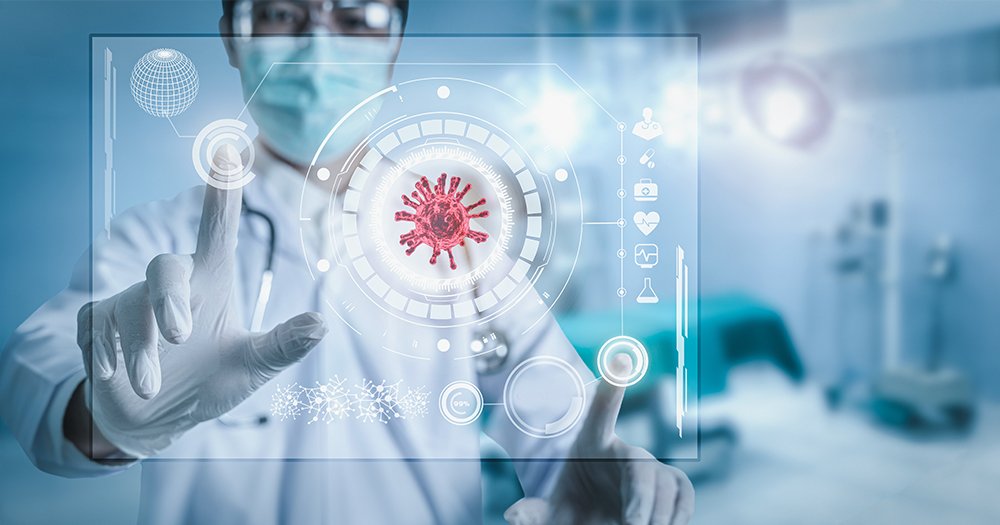Introduction
Medical education is one of the most rigorous and demanding fields of study, aiming to prepare individuals for a lifelong career in healthcare. Traditionally, medical education has been structured around extensive theoretical knowledge, practical clinical skills, and the development of empathy and communication skills. However, the world of medicine is constantly evolving, influenced by rapid advancements in medical science, technology, changing patient demographics, and evolving societal expectations.
As such, modern medical education faces numerous challenges. Some of these challenges are not only academic and logistical in nature, but also societal and ethical. In this article, we will explore the key challenges faced by medical education today and the ways in which these challenges are being addressed. We will also discuss potential future changes to the medical education system and how these can improve outcomes for both medical students and patients.
Key Takeaways
- Medical education must balance theoretical knowledge with practical, hands-on training to prepare students effectively.
- Technological advancements are reshaping medical education, but integration of these tools requires time, investment, and adaptation.
- The mental health of medical students is a growing concern, necessitating stronger support systems and a shift in the culture of medical education.
- Diversity, equity, and inclusion are crucial for ensuring that healthcare providers are prepared to meet the needs of a diverse patient population.
- Medical education must adapt to the changing nature of healthcare delivery, focusing on team-based care, patient-centered approaches, and the integration of new technologies.
Balancing Theory and Practical Training
One of the most persistent challenges in medical education is striking the right balance between theoretical learning and practical training. Theoretical knowledge, which is fundamental in understanding the science behind disease and treatment, remains essential. However, there is an increasing emphasis on acquiring practical skills through clinical rotations, patient interactions, and hands-on experiences.
Students often face a dilemma between mastering foundational knowledge and gaining enough clinical exposure to become effective practitioners. Many medical schools have incorporated innovative teaching methods like problem-based learning (PBL) and simulation-based education, which allow for more interactive, hands-on experiences. However, the balance between in-classroom theory and on-the-job practical application remains an ongoing challenge.
The Evolving Role of Technology
Technology is transforming the medical field in profound ways, and this transformation is also affecting medical education. From the use of digital platforms for learning to advanced diagnostic tools, healthcare professionals must be adept at integrating technology into their practice. Medical students are now expected to familiarize themselves with various technologies such as Electronic Health Records (EHR), Artificial Intelligence (AI), Virtual Reality (VR), and robotics.
While these advancements have the potential to greatly enhance learning and practice, they also present a challenge in terms of training and readiness. Many educational institutions are struggling to keep pace with the fast evolution of medical technology, and integrating these tools into the curriculum in a meaningful way is not without its difficulties. Faculty members need ongoing training in these technologies, and the infrastructure to support digital education and simulation-based learning is costly.
Mental Health and Well-Being of Medical Students
The demanding nature of medical education can take a significant toll on the mental health of students. The pressure to excel academically, coupled with long hours, stressful clinical rotations, and a general culture of perfectionism, leads many medical students to experience burnout, anxiety, and depression. Research has shown that medical students are at a higher risk for mental health issues compared to other student populations.
Institutions are beginning to recognize the importance of addressing student mental health, but there is still stigma surrounding seeking help, and support systems are often inadequate. There is a growing need for medical schools to prioritize student well-being, offering mental health services, wellness programs, and fostering a more compassionate learning environment that encourages open discussions about stress and mental health.
Diversity and Inclusion in Medical Education
Historically, medical education has been criticized for its lack of diversity, both in terms of the student body and the curriculum. A lack of diversity in medical education can contribute to health disparities, as students may not be exposed to the varied needs of different populations. This is particularly important as healthcare continues to evolve and patient demographics shift, requiring healthcare providers to be culturally competent.
Efforts to increase diversity in medical schools have gained momentum, with many institutions focusing on recruiting students from underrepresented groups and incorporating cultural competency into the curriculum. However, there is still work to be done to ensure that medical education is accessible, equitable, and inclusive for all students, regardless of their race, gender, socioeconomic background, or geographic location.
Addressing the Global Health Workforce Shortage

The global shortage of healthcare professionals, particularly in low- and middle-income countries, is another key challenge in modern medical education. Medical schools in many parts of the world are unable to accommodate the increasing demand for trained healthcare professionals. In addition, healthcare systems are often stretched thin, with insufficient resources to train the next generation of medical professionals adequately.
Medical schools must focus on preparing students not only to work in their home countries but also to respond to global health needs. This means offering programs that train students in global health, telemedicine, and public health policies. International collaboration in medical education, such as exchange programs, can also help students gain a broader perspective on healthcare delivery.
The Burden of Student Debt
Medical education is expensive, and the cost of tuition continues to rise. With the average cost of medical school surpassing hundreds of thousands of dollars in some countries, students often graduate with significant debt. This financial burden can influence career choices, with many graduates opting for higher-paying specialties to pay off their loans more quickly, rather than pursuing underserved or high-need areas of medicine.
The debt burden also discourages some talented individuals from pursuing a medical career altogether. The increasing cost of medical education has spurred discussions about reforming tuition structures, increasing scholarships and loan forgiveness programs, and exploring alternative funding models. Additionally, a reevaluation of the economic and social factors that drive up education costs is crucial for sustainable change.
The Changing Nature of Healthcare Delivery
Healthcare is shifting towards more patient-centered, team-based, and technology-driven approaches. Medical education needs to adapt to these changes by preparing students for interdisciplinary collaboration with nurses, allied health professionals, and other medical specialists. In addition, there is an increased focus on preventive care, patient education, and the integration of social determinants of health into clinical decision-making.
Medical schools are starting to incorporate these shifts into the curriculum, but there is still a lag in fully training students to work effectively in these new models of care. Developing collaborative, cross-disciplinary training programs and ensuring that medical students are equipped with the necessary skills to meet the demands of modern healthcare delivery are critical steps for the future of medical education.
Preparing Students for the Ethical and Legal Challenges in Medicine
In addition to clinical skills and knowledge, medical students must be trained to navigate the complex ethical and legal challenges that arise in healthcare. Issues like informed consent, patient privacy, end-of-life decisions, and medical malpractice require careful attention. Medical ethics courses are essential to help students understand the nuances of these issues and make decisions that prioritize patient welfare.
As technology advances and new ethical dilemmas arise, such as those related to AI and genetic testing, medical education must evolve to incorporate these emerging challenges. Ethical education should be an integral part of medical training to ensure that healthcare providers are equipped to make sound decisions in difficult situations.
Adapting to Interdisciplinary Learning

Modern medicine is highly interdisciplinary, with medical professionals working in teams that include pharmacists, social workers, physical therapists, and other specialists. However, traditional medical education has often been siloed, with little interaction between different health disciplines. The rise of interprofessional education (IPE), which brings together students from various healthcare fields to learn together, is one response to this challenge.
IPE programs aim to improve teamwork, communication, and collaboration among future healthcare providers. This approach fosters a better understanding of the roles and contributions of different healthcare professionals and prepares students for the collaborative nature of modern healthcare delivery. However, the integration of IPE into medical education presents logistical and curriculum challenges that need to be addressed.
Continuing Medical Education and Lifelong Learning
The need for lifelong learning is essential in medicine, as new medical breakthroughs, treatments, and technologies are continuously emerging. This creates a challenge for healthcare professionals, who must continue their education long after completing medical school and residency. Continuing medical education (CME) is crucial for maintaining competency and staying up-to-date with the latest advancements.
Medical education systems need to adapt to the increasing importance of CME by fostering a culture of continuous learning. Medical schools can play a role by encouraging students to develop habits of self-directed learning, critical thinking, and staying curious about new developments in healthcare.
Rethinking Assessment Methods in Medical Education
One of the most significant challenges in modern medical education lies in the way students are assessed. Traditional assessment methods, such as exams and written tests, have been criticized for not accurately measuring a student’s practical ability, critical thinking, or preparedness for real-world medical practice. Modern medical education requires students to demonstrate competency in both theoretical knowledge and practical, patient-facing scenarios.
Traditional examinations often fail to capture a student’s ability to handle complex clinical situations or their interpersonal skills, such as communication and empathy. This discrepancy between testing methods and the skills needed in real-world practice has led many institutions to explore alternative methods of assessment. These alternatives include Objective Structured Clinical Examinations (OSCEs), where students are tested on their clinical skills in a simulated environment, and the use of portfolios to track students’ progress in various domains of medical practice over time.
The Decline in the Number of Primary Care Physicians

The demand for healthcare providers in primary care has been growing in many parts of the world, yet medical students continue to gravitate toward specialized fields due to higher earning potential, prestige, and a perceived lower workload. The focus on specialization has led to an increasing shortage of primary care physicians, which is especially evident in rural and underserved communities.
Medical schools must recognize this shift and take proactive steps to address it by incentivizing careers in primary care through targeted scholarships, loan forgiveness programs, and mentorship from experienced general practitioners. Furthermore, curricular changes that emphasize the critical role of primary care in improving health outcomes—especially in preventative and chronic care—could help students appreciate the value of this specialty.
Globalization of Medical Education and Mobility
Globalization has introduced new complexities to medical education. More medical students are choosing to study abroad, driven by factors such as the availability of seats in medical programs, affordability, and the opportunity to gain diverse clinical experiences. However, this globalization raises concerns about the quality of education, differences in educational standards across countries, and the recognition of qualifications internationally.
Medical schools worldwide are increasingly offering programs designed for international students, with many students choosing to pursue their medical degrees in countries with established educational reputations. However, challenges persist regarding the standardization of medical curricula, ensuring that foreign-trained doctors are adequately prepared to meet the health needs of their home countries, and facilitating seamless pathways for licensure and practice.
In response to these concerns, international accreditation bodies and global health organizations are working to establish standardized competencies for medical graduates, but it will take time to develop uniform educational practices that meet global needs.
Changing Expectations of Medical Professionals
The role of a healthcare professional today is far more complex than ever before. The evolving role of the doctor now includes managing patient expectations, working in multidisciplinary teams, and providing culturally competent care. In response to these changes, medical education must evolve to ensure that students are prepared to meet these challenges, not just in clinical settings but in broader healthcare contexts as well.
For example, increasing attention is being given to training doctors in communication skills, especially for handling difficult conversations with patients, families, and colleagues. In addition, there is an increasing emphasis on training healthcare professionals to engage in shared decision-making with patients, particularly in cases involving chronic disease management or end-of-life care.
The Need for a More Flexible Medical Curriculum

The traditional medical school curriculum is often rigid, with little room for exploration outside of core subjects such as anatomy, pathology, and pharmacology. However, the growing complexity of healthcare systems, rapid medical advancements, and societal needs demand a more flexible and adaptable approach to medical education.
Flexibility in the curriculum would allow students to specialize in areas of particular interest, explore fields outside of clinical medicine (e.g., medical research, public health, health policy), and foster interdisciplinary learning. Some medical schools are already incorporating elective courses, research opportunities, and internships that allow students to explore these different paths.
Bridging the Gap Between Medical Education and Real-World Healthcare Needs
The gap between what students learn in medical school and the needs of real-world healthcare systems continues to be a persistent challenge. Medical education often focuses heavily on teaching students clinical knowledge and skills without sufficiently considering the broader context in which they will practice.
Healthcare systems are increasingly complex, and physicians today must navigate complex administrative processes, insurance systems, and evolving healthcare policies. Medical students often enter practice without an adequate understanding of how these factors impact patient care. As a result, medical schools must begin integrating training on healthcare systems, policy, and management into their curricula.
Also Read : How Can Healthcare Education Empower Patients To Manage Their Health?
Conclusion
Modern medical education is at a crossroads. The landscape is changing rapidly, driven by technological advancements, evolving patient care models, and increasing pressure on healthcare systems worldwide. The challenges of balancing theory and practice, integrating technology, addressing mental health, promoting diversity, and ensuring lifelong learning are all pivotal areas that need attention.
Ultimately, the future of medical education will require a holistic approach that embraces innovation, prioritizes student well-being, and adapts to the demands of a dynamic healthcare environment. By addressing these challenges head-on, medical education can continue to evolve and produce healthcare professionals who are not only knowledgeable and skilled but also compassionate and equipped to meet the complex needs of patients in the 21st century.
FAQs
What is the biggest challenge in medical education today?
The biggest challenge is balancing the integration of theoretical knowledge with practical clinical skills. As technology and healthcare systems evolve, medical schools must adapt their curricula to keep pace with these changes.
How has technology impacted medical education?
Technology has revolutionized medical education by providing tools such as virtual reality simulations, e-learning platforms, and AI-based diagnostic tools. These innovations enhance learning but also pose challenges in terms of infrastructure, faculty training, and integration into the curriculum.
Why is diversity important in medical education?
Diversity in medical education ensures that students are trained to provide care for a variety of populations. It also helps to reduce healthcare disparities and improve patient outcomes by fostering cultural competence.
How can medical schools improve student well-being?
Medical schools can improve student well-being by providing better mental health support services, promoting wellness programs, and addressing the stigma surrounding mental health in medical education.
What role does interprofessional education play in medical training?
Interprofessional education fosters collaboration between students from different healthcare disciplines, helping them to develop the skills necessary for working in multidisciplinary teams and improving patient care.
How can medical schools address the rising cost of education?
Medical schools can address the rising cost by offering more scholarships, loan forgiveness programs, and exploring alternative funding models. Policy changes to make education more affordable are also essential.
What are the ethical challenges faced by medical students?
Medical students face ethical challenges such as informed consent, patient privacy, and making difficult end-of-life decisions. Medical education must provide students with the tools to navigate these dilemmas.

